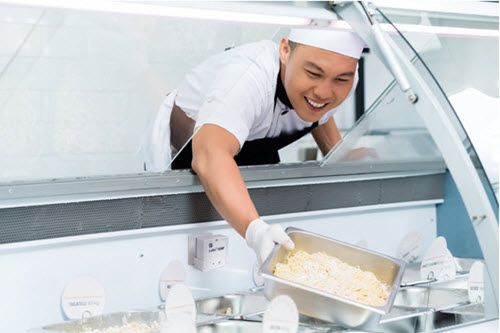4 Ways C-stores are Benefiting from Automated Temperature Monitoring Solutions
Posted on 1st May 2021
 Adding a wider array of fresh foods and prepared meals to meet consumer demand was already a hot trend before the onset of COVID-19.
Adding a wider array of fresh foods and prepared meals to meet consumer demand was already a hot trend before the onset of COVID-19.
This pivot in operations makes c-stores more accessible for shoppers looking for convenient, prepared foods, who also want to avoid larger grocery stores. However, the added service delivery options make it more difficult for operators to handle their daily responsibilities, including staff scheduling, food preparation tasks, equipment cleaning, and staff and customer safety.
With so many challenges, the focus on keeping food safe both in refrigeration units and in prepared food, as well as avoiding costly health-code violations creates unnecessary stress for operators. Improper food temperatures are consistently cited as one of the most common food safety violations. The good news is that efficient tools and technology that help maintain food safety are now available—and improving in quality.
Four major features of these automated temperature monitoring systems allow operators to worry less about food safety and focus more on meeting the changing needs of shoppers:
- Accurate Readings. One such system that addresses the critical need for food safety is the Temp Monitoring and Food Checks Solution that is part of DayMark’s MenuCommand kitchen automation platform. The DayMark solution includes wireless sensors, a gateway for Internet connectivity, and a web-based dashboard, all working in unison to record accurate temperature readings and manage the data in order to increase visibility and control of the store equipment that maintains product freshness. In addition, it features JRI’s more advanced LoRa technology that allows for longer-range communication between system components and for data to pass though heavy materials such as stainless-steel freezers.
- Real Time Monitoring and Alerts. Access to real time performance data to address potential food safety issues—such as equipment downtime or refrigerant leaks—also reduces maintenance costs and results in better energy efficiency. Automated temperature sensors alert operators and their staff in real-time when sets of pre-defined temperature rules or thresholds are exceeded, enabling a rapid response and avoiding downtime.
- Efficient Use of Staff. In the past, staff would manually check refrigerators, freezers, deli cases and other areas where food is prepared, then record temperatures in handwritten logs. These actions would be performed several times per day and were far from precise, leaving plenty of room for error. With an automated temperature monitoring system, data collected by temperature data loggers and sensors can be managed electronically, saving operators both staff time and money.
- HACCP Compliance. Investing in an automated temperature monitoring solution ensures compliance with HACCP requirements in the most easy-to-use and efficient manner possible. The DayMark system, for example, is HACCP-compliant, providing food safety management, temperature monitoring, and compliance through an intuitive and comprehensive web application, either wirelessly or through a hardwired connection. Operators know for sure that their food is safe, and they can access time-stamped temperature data at any time to prove it.
Leveraging technology and adopting smart food safety strategies frees up time for operators to focus on meeting changing customer demand, worry less, and make smarter business decisions that benefit their customers.
Article originally appeared on the CStore Decisions website


